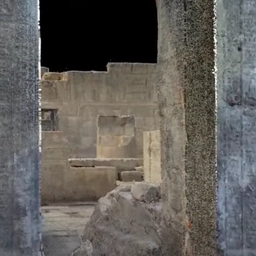
These 3 discoveries suggest that ancient Egyptians traveled to America thousands of years ago
These 3 discoveries suggest that ancient Egyptians traveled to America thousands of years ago
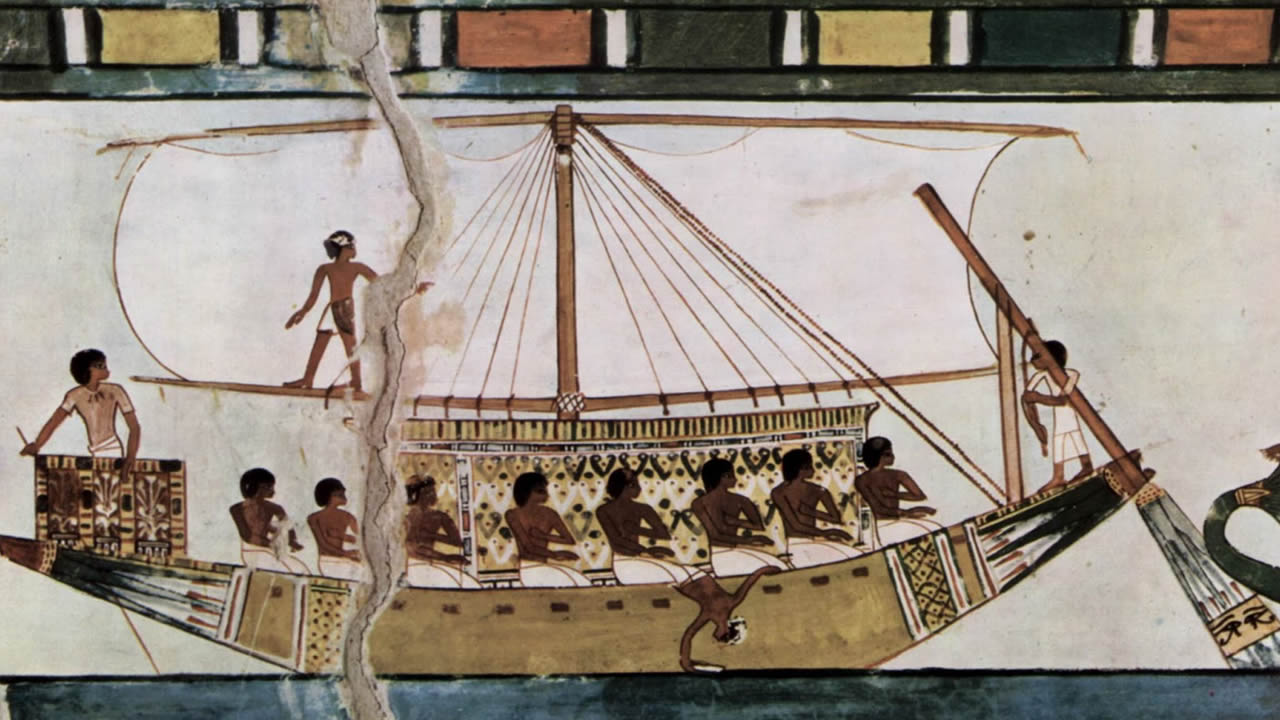
The idea that ancient egyptians had the large-scale capabilities and knowledge of ocean voyages thousands of years ago, they are firmly rejected by leading scholars despite evidence to the contrary.
Most of the ideas that support this possibility have been met with skepticism since such an idea is radically opposed to written history.
Despite the contrary belief, there is evidence to suggest that the ancient Egyptians explored the planet like no one else at the time:
1. Evidence of pre-Columbian transoceanic contact
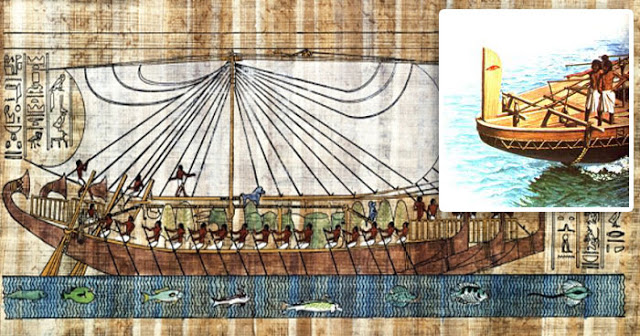
To the amazement of archaeologists and researchers, in 1992, a German researcher conducting tests on ancient Egyptian mummies found traces of tobacco and coca silver derivatives on the skin, hair, and bones of ancient mummies. Egypt.
Tobacco and coca were plants that only grew in the “New World” at the time of mummification. So, how did these exotic narcotics get to ancient Egypt before the “New World” was found?
This crucial piece of evidence shows that ancient civilizations not only were they interconnected in the distant past, they also established trade routes thousands of years ago.
This is why it is not so hard to believe that there are ancient Egyptian hieroglyphs in Australia and that the people of ancient India knew about present-day England and called it “the island of the white cliffs.” the Vishnu Purana describes, to the amazement of many, parts of Europe, America and even the northern polar areas of our planet.
Ancient Egyptian artifacts discovered in the Grand Canyon
While this is a highly criticized topic, there is evidence to suggest that in the 1900s, researchers from the Smithsonian Institute, stumbled upon ancient Egyptian artifacts deep in the Grand Canyon.
According to an article published by the Arizona Gazette, the discovery of a series of mysterious caves and artifacts in the Marble Canyon region, Gand’s Canyon. The report claims that two Smithsonian-funded researchers, Prof. Jordan SA and GE Kinkaid, were responsible for the groundbreaking discovery:
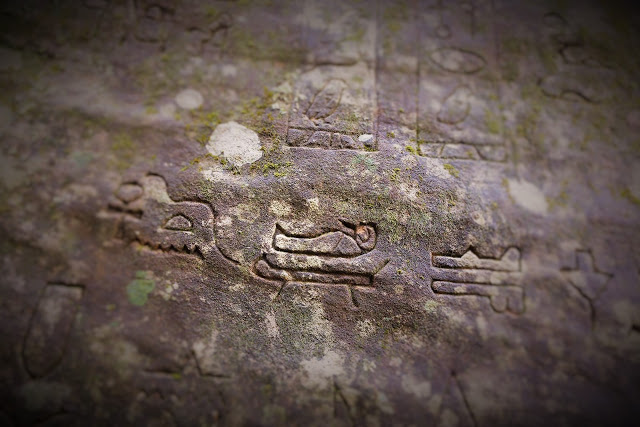
The article says:
“(D) discoveries prove almost conclusively that the race that inhabited this mysterious cavern, carved out of solid rock by human hands, was of eastern origin, possibly from Egypt, dating back to Ramses. If their theories are confirmed by the translation of the hieroglyphic engraved tablets, the mystery of the prehistoric peoples of North America, their ancient arts, who they were and where they came from, will be solved. Egypt and the Nile, and Arizona and the Colorado will be linked by a historical chain running back to the ages, which shakes the wildest imaginations of fictionists ”.
Evidence from the large-scale ocean voyages of ancient Egypt
But if the ancient Egyptians, in fact, had the ability to organize great transoceanic voyages, would we not have found more evidence of their voyages?
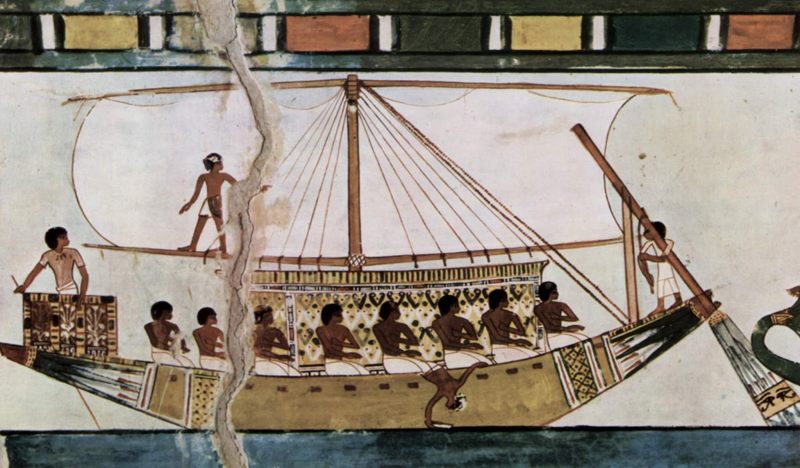
Well, we got it, it’s just that mainstream scholars strongly oppose the discoveries while labeling them elaborate hoaxes.
Well, according to an intriguing set of glyphs found in Australia, it indicates that ancient Egyptian sailors traveled to Australia thousands of years ago, proving that ancient Egyptian civilization they had the ability to take a large-scale transoceanic tour.
While the mysterious glyphs, known as the Gosford glyphs, are viewed as a hoax by communication scholars, many people believe that the Gosford glyphs are just one of many pieces pointing to the large-scale ocean travel of ancient Egypt.
As previously reported, the most interesting part of the Gosford Glyphs is its writing style. According to local residents who have had the opportunity to view and study these hieroglyphs, they appear very ancient and are written in the archaic style of the early dynasties, a style that has been little studied and is untranslatable by most Egyptologists.
However, Egyptologists like Mohamed Ibrahim and Khemit School Co-Director Yousef Abd’el Hakim Awyan (who has studied ancient Egyptian hieroglyphics all his life) were able to decipher the riddle.
Mohamed Ibrahim and Yousef Abd’el Hakim Awyan, worked with a group of people in order to translate the mysterious engravings. The result? Well, not only are the mysterious ancient Egyptian hieroglyphs in Australia authentic, but various ancient hieroglyphs and grammatical variations were used with precision by scribes, which, crucially, were not even documented in Egyptian hieroglyphic texts until 2012.
As you can see, there is numerous evidences that support the idea that ancient Egyptians had the ability of transoceanic voyages in the distant past, leaving behind clues that today’s researchers are finally picking up.
Did Paleoamericans Reach South America First?
In “ Textbook Story of How Humans Populated America is Biologically Unviable, Study Finds ”, recently published in Ancient Origins, it was noted that DNA studies indicate that people could not have crossed the Beringia land bridge to enter the Americas 13,000 years ago because the “entry route was biologically unviable”. Although this finding by geneticists is surprising, it adds even more mystery to the archaeological evidence that anatomically modern humans were in South America tens of thousands of years before Ice Age people could have crossed a viable land bridge between Alaska and Siberia.
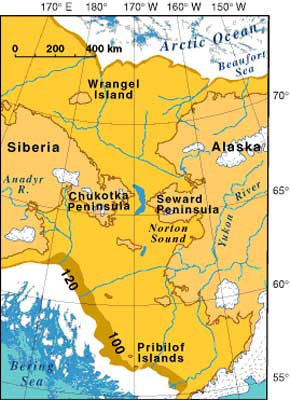
The earliest dates for habitation of the American continent to occur below Canada in South America are highly suggestive that the earliest settlers on the American continents came from Africa before the Ice melted at the Bering Strait and moved northward as the ice melted. An African origin for these people is a good fit because Ocean Currents would have carried migrants from Africa to the Americas, since there were no Ice Age sheets of ice to block passage across the southern Atlantic.
Important Archeological Sites
Dr. Bryan, in Natural History has noted many sites where PaleoAmericans have left us evidence of human habitation, including the pebble tools at Monte Verde in Chile (c.32,000 Before Present), rock paintings at Pedra Furada in Brazil (c.22,000 BP), and mastodon hunting in Venezuela and Colombia (c.13,000 BP). These discoveries have led some researchers to believe that the Americas were first settled from South America.
The main evidence from the ancient Americans are prehistoric tools and rock art, like those found by Dr. Nieda Guidon. Today archaeologists have found sites of human occupation from Canada to Chile that range between 20,000 and 100,000 years old. Guidon, in numerous articles claims that Africans were in Brazil between 65,000-100,000 years ago. Guidon also claims that man was at the Brazilian sites 65,000 years ago. She told the New York Times that her dating of human populations in Brazil 100,000 years ago was based on the presence of ancient fire and tools of human craftsmanship at habitation sites.
Martin and R. G. Klein, after discussing the evidence of mastodon hunting in Venezuela 13,000 years ago, observed that: “The thought that the fossil record of South America is much richer in evidence of early archaeological associations than many believed is indeed provocative. Have the earliest hunters been overlooked in North America? “
Warwick Bray has pointed out that there are numerous sites in North and South America which are over 35,000 years old. A.L. Bryan noted that these sites include, the Old Crow Basin (c.38,000 BC) in Canada; Orogrande Cave (c.36,000 BC) in the United States; and Pedra Furada (c.45,000 BC) in Brazil.
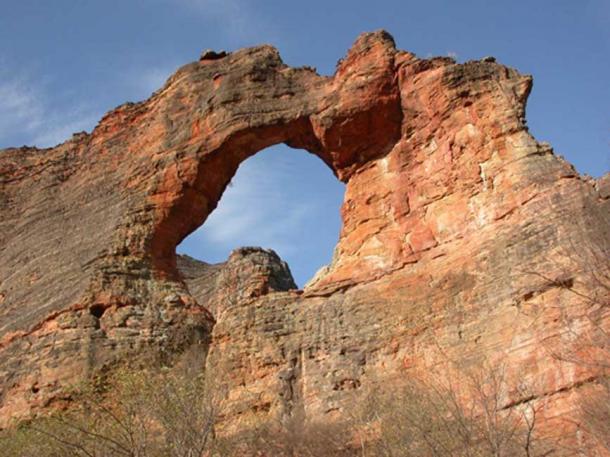
Using craniometric quantitative analysis and multivariate methods, Dr. Neves determined that Paleo Americans were either Australian, African or Melanesians. The research of Neves indicated that the ancient Americans represent two populations, PaleoAmericans who were phenotypically African, Australian or Melanesian and an Asiatic population that appears to have arrived in the Americas after 6000 BC.

Archaeologist have reconstructed the faces of ancient Americans from Brazil and Mexico. These faces are based on the skeletal remains dating back to 12,000BC. The PaleoAmericans resemble the first Europeans.
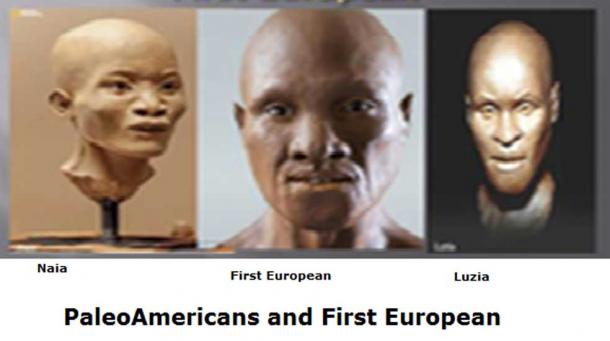
PaleoAmericans and First European
Researchers working on the prehistoric cultures of these ancient people note that they resemble the Black Variety of humanity, instead of contemporary Native Americans. The Black Variety include the Blacks of Africa, Australia, and the South Pacific.
Dr. Chatters, who found Naia’s skeleton, told Smithsonian Magazine that: “The small number of early American specimens discovered so far have smaller and shorter faces and longer and narrower skulls than later Native Americans, more closely resembling the modern people of Africa, Australia, and the South Pacific. “This has led to speculation that perhaps the first Americans and Native Americans came from different homelands,” Chatters continues, “or migrated from Asia at different stages in their evolution.”
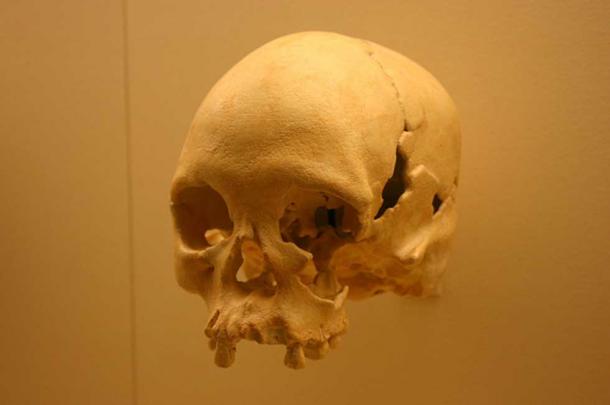
A cast of Luzia’s skull at the National Museum of Natural History. (CC BY-SA 2.0 )
Although Dr. Chatters believes the PaleoAmericans came from Asia, this seems unlikely, because of the Ice sheet that blocked migration from Asia into the Americas. C. Vance Haynes noted that: “If people have been in South America for over 30,000 years, or even 20,000 years, why are there so few sites? [. ]One possible answer is that they were so few in number; another is that South America was somehow initially populated from directions other than north until Clovis appeared”.
The fact that the Beringia land bridge was unviable 15,000 years ago make it unlikely that during the Ice Age man would have been able to walk or to sail from Asia to South America at this time. As a result, these people were probably from Africa, as suggested by Dr. Guidon.
Prehistoric Sea Travel
In summary, the land bridge between Siberia and Alaska was unviable before 13,000 BC. Even though man could not enter the Americas until after 14,000 years ago, man was probably in South America as early 100,000 years ago, according to Dr. Guidon’s research in Brazil.
The first people in the Americas are called PaleoAmericans. The research of Chatters and Neves indicate that the PaleoAmericans were not Asiatic. These researchers claim the PaleoAmericans, “more closely resembl[ed] the modern people of Africa, Australia, and the South Pacific.”
The first Americans probably came to the Americas by sea, due to the unviable land route to the Americas before 13,000 BC. As a result, we must agree with Guidon that man probably traveled from Africa to settle prehistoric America.
The archaeological evidence indicates that PaleoAmericans settled South America before North America, and that these Americans did not belong to the Clovis culture. Africa is the most likely origin of the PaleoAmericans, because the Ice sheet along the Pacific shoreline of North America, Siberia and Alaska, would have made the sea route from Asia or Europe unviable 65,000 years ago. The Dufuna boat dating back to 8,000 BC, shows that Africans had boats at this early date. The culture associated with the Dufuna boat dates back to 20,000 years ago.
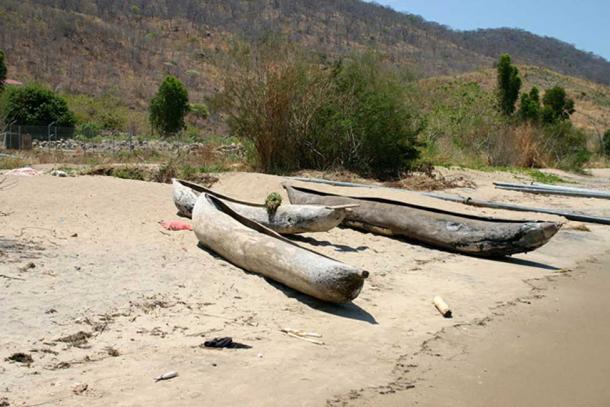
Dugout canoes hewn from wood at Lake Malawi, East African Rift system. ( CC BY-SA 2.0 )
Top Image: Rock paintings at Pedra Furada, Brazil ( CC BY-SA 4.0 )
References
Bray, Warwick. 1988. “The Paleoindian debate”. Nature 332, (10 March), p.107.
Bryan, A. L. 1987. “Points of Order”. Natural History , pp.7-11.
Guidon, N. and Delibrias, G. 1986. “Carbon-14 dates point to man in the Americas 32,000 years ago.” Nature 321:769-771.
Guidon, N., and B. Arnaud. 1991. “The chronology of the New World: Two faces of one reality.” World Arch. 23(2):167-178.
Guidon, N., et al.1996. “Nature and Age of the Deposits in Pedra Furada, Brazil: Reply to Meltzer, Adovasio & Dillehay,” Antiquity, 70:408.
Haynes,Jr., C.V. 1988. “Geofacts and Fanny”. Natural History ,(February)pp.4-12.
Kumar, Mohi. 2014. DNA From 12,000-Year-Old Skeleton Helps Answer the Question: Who Were the First Americans? [Online] Retrieved 16 August 2016 at : http://www.smithsonianmag.com/science-nature/dna-12000-year-old-skeleton-helps-answer-question-who-were-first-americans-180951469/?no-ist
Martin, P. S. and R.G.Klein (eds.), Quarternary Extinctions: A Prehistoric Revolution , (Tucson:University of Arizona Press,1989) p.111.
Neves, W. A. and Pucciarelli, H. M. 1989. Extra-continental biological relationships of early South American human remains: a multivariate analysis. Cieˆncia e Cultura, 41: 566–75
Neves, W. A. and Pucciarelli, H. M. 1990. The origins of the first Americans: an analysis based onthe cranial morphology of early South American human remains. American Journal of Physical Anthropology, 81: 247.
Neves, W. A. and Pucciarelli, H. M. 1991. Morphological affinities of the first Americans: an exploratory analysis based on early South American human remains. Journal of Human Evolution, 21: 261–73.
Neves, W. A. and Meyer, D. 1993. The contribution of the morphology of early South and Northamerican skeletal remains to the understanding of the peopling of the Americas. American Journal of Physical Anthropology, 16 (Suppl): 150–1.
Neves, W. A., Powell, J. F., Prous, A. and Ozolins, E. G. 1998. Lapa Vermelha IV Hominid 1: morphologial affinities or the earliest known American. American Journal of Physical Anthropology, 26(Suppl): 169.
Neves, W. A., Powell, J. F. and Ozolins, E. G. 1999a. Extra-continental morphological affinities of Palli Aike, southern Chile. Intercieˆncia, 24: 258–63.
Neves, W. A., Powell, J. F. and Ozolins, E. G. 1999b. Modern human origins as seen from the peripheries. Journal of Human Evolution, 37: 129–33.
Neves W.A . and Pucciarelli H.M. 1991. “Morphological Affinities of the First Americans: an exploratory analysis based on early South American human remains”. Journal of Human Evolution 21:261-273.
Neves W.A ., Powell J.F. and Ozolins E.G. 1999. “Extra-continental morphological affinities of Lapa Vermelha IV Hominid 1: A multivariate analysis with progressive numbers of variables. Homo 50:263-268
Neves W.A ., Powell J.F. and Ozolins E.G. 1999. “Extra-continental morphological affinities of Palli-Aike, Southern Chile”. Interciencia 24:258-263. [Online] Available at: http://www.interciencia.org/v24_04/neves.pdf
Neves, W.A., Gonza´ lez-Jose´ , R., Hubbe, M., Kipnis, R., Araujo, A.G.M., Blasi, O., 2004. Early Holocene Human Skeletal Remains form Cerca Grande, Lagoa Santa, Central Brazil, and the origins of the first Americans. World Archaeology 36, 479-501
Neves, W. A., and M. Hubbe. 2005. Cranial morphology of early Americans from Lagoa Santa, Brazil: Implications for the settlement of the New World. Proc. Natl. Acad. Sci. USA 102:18,309–18,314.
Powell,J.F. (2005). First Americans:Races, Evolution and the Origin of Native Americans. Cambridge University Press.
Winters,C. (2015). THE PALEOAMERICANS CAME FROM AFRICA, jirr. Vol. 3 (3) July-September, pp.71-83/Winter. [Online] Available at: https://www.academia.edu/17137182/THE_PALEOAMERICANS_CAME_FROM_AFRICA
Clyde Winters
Dr. Clyde Winters is an Educator , Anthropologist and Linguist. He has taught Education and Linguistics at Saint Xavier University -Chicago. Dr. Winters is the author of numerous articles on anthropology, archeogenetics and linguistics. His articles have appeared in the Journal. Read More
Comments
I am not sure that the m1 (Mt) markers in Tanzania hold up, since the most recent I have read suggests a back migration. Almost ALL African MtDNA is haplotype L NOT M or N.
Now of course IF (and it is a bloody big IF) people stop thinking “out of africa” and start thinking “out of SEA or even Melanesia, you just MIGHT be able show show a link between paleo Indians, Melanesian Australoid and Africans. In these case the “eve Mit DNA is l3 or M or N (any one of these would work) rather than L0 which is the current accepted assumption.
In this case you would be looking at some very early split somewhere along the Pacific Rim that eventually sent the L descendants towards Africa and the Ms towards Australia and India and Melanesia may be also towards South America. This would explain any language and place name similarities and also the possibility that the Del Fuegans used click languages like the San.
The N lineage and its descendants (R and B) seem to be just a little younger than the Ms and if you look at the current distributions seemed to have reached the Americas from the traditional Northern route (ie via B).
To throw in something else that has been bugging me for years – well before modern haplotype analysis is the ABSENCE of A and B type bloods in the Americas and in Tasmania and of B in Australia. I do not really buy the founder effect ideas because they would need to happen TWICE which is unlikely and the whole “pathogen” explanation just does not gel with me – sure if there were low frequencies etc but absence altogether.
So a very early split from an original proto human population of ABO mixture into two populations – first an AO population (eg San and Andaman Islanders and Australians) and then (probably quite soon afterwards) a further split into an O only population that went on to Tasmania and then (I have no idea HOW) reached South America.
Adding in the mtDNA you would have had in the dim dark past the following populations, possibly all existing at the same time, separated by distance or possibly water:
G1. Somewhere in SEA a group of “originals” who would probably be dark skinned, Negrito and Melanesian in appearance with mixed ABO and also mixed MN blood groups and principal Mt DNA M (or L3). They may well have carried BOTH the blood groups C and c and probably the remnant Du group
G2 Moving TOWARDS the South – Australia and Indonesia and India you have the AO group who are also Mt group M. In appearance they would be similar to group 1. They lose the Du
G2.1 The closest living relations could be the some Australians ie those with mt DNA M and derivatives
G2.2 On the opposite edge of the distribution moving towards South India you would have a group like the Andamanese
G3. At the outer edge of one of these this AO groups (probably G2.1) you have a further split into an O mono type. This group reaches Tasmania and possibly South America. They would be Mt M with various descendant subtypes. It would be expected that they would have a negrito/australoid appearance
G4 Meanwhile some our proto group G1 move towards Africa somewhere collecting the Mt L haplotypes and also LOSING the C blood group. They also lose the N bloodgroup. The closest living descendants are possibly some of the Pygmy tribes.
G5 at about the same time our prop group splits into a Melanesian group who lose the c and M blood groups but retain ABO blood and N and C blood. They would be Mt M
G6 The foremothers of the San are a little confusing because they share the Mt L of group 4 and blood groups a little more typical of the Andamanese. With rather lighter skin than both Melanesians and Pygmies it seems possible they originated somewhere in colder climates.
Anyway this is a very different perspective that maybe helps think about the possible paleo Indians
Here’s How People First Arrived in the New World … Maybe
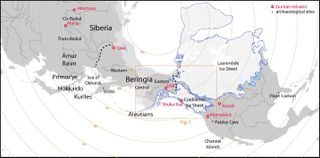
Humans had a population boom around 16,000 years ago as they neared or reached the Americas after traversing the Bering Strait land bridge. Notice that known sites with ancient human remains (red circles) and archaeological sites (black crosses) are marked on the map. (Image credit: Potter et al., Sci. Adv. 2018;4: eaat5473)
Did the first people to inhabit the Americas hug the coast after crossing the Bering Strait or travel farther inland, between two massive ice sheets?
This question has dogged researchers for decades. Now, a review of archaeological, geologic, anthropological and genetic data argues for both, but especially for the latter: It appears that prehistoric humans favored the inland route, although some traveled along the so-called coastal kelp highway later on, the new review says.
But not everyone is convinced this is the case. Some recent studies have suggested that the coastal route was the preferred path. That’s because inland conditions were far too harsh until the ice sheets receded, which some research suggests did not happen until after the first settlements in America were founded. [In Images: Ancient Beasts of the Arctic]
Incredible journey
The first Americans began their journey in northeast Asia and southern Siberia. Then, between 25,000 and 20,000 years ago, the ancestors of today’s Native Americans split off from East Asians, according to the new review.
What happened next is hotly debated. It’s possible that this group immediately traveled across the now-submerged Bering Strait land bridge, or that they hung out in Beringia — a concept known as the Beringia standstill hypothesis. Beringia is the term that describes what then would have been a massive region encompassing parts of Russia, called western Beringia; Alaska, called eastern Beringia; and the ancient land bridge between the two.
The review authors have yet another idea: Maybe this group stayed in northeast Asia, but in a way that led the group to become genetically isolated from other populations there. Then, after they traveled across the land bridge and reached Alaska, the people would have been able to travel inland for the most part through a new ice-free route. (Scientists disagree about when this ice-free route opened, however.)
This map shows archaeological sites that are older than 13,000 years (gray), between 10,000 and 13,000 years old (white) and geological/biological samples that are between 13,300 and 15,700 years old. Notice that the inland sites are generally older than the coastal sites. (Image credit: Potter et al., Sci. Adv. 2018;4: eaat5473)
As the people neared or reached the Americas, their population exploded around 16,000 years ago, said review lead researcher Ben Potter, the department chair and a professor of archaeology at the University of Alaska Fairbanks.
“In short, the data show that we’ve got these Native American ancestors splitting from East Asians quite a long time ago — around 25,000 years ago — with a period of isolation, genetic isolation,” Potter said at a news conference. Later, once these people were on their incredible journey, “we see evidence of a population expansion, after 16,000 years ago and before 14,000 years ago, when we see the earliest unequivocal sites in the Americas.”
Furthermore, the oldest archaeological sites from the Aleutian Islands to Yakutat Bay, which are now part of Alaska, date to about 8,000 years ago — more than 6,000 years after the dates of the earliest interior Beringian sites, the researchers wrote in the review. This suggests that the first migrants took the inland route, as these sites have older archaeological dates, the researchers said.
Best route
Most archaeologists agree that by 13,000 to 12,600 years ago, the ancient people of the Clovis culture were already living in what is now New Mexico.
But which route did the first Americans take to get there: the inland or coastal corridor? Archaeologists have long debated this issue. For much of the 20th century, scientists thought that ancient people traveled inland, over the ice-free corridor in North America between two massive ice sheets. But over the past two decades, more archaeologists have favored the idea of the coastal kelp highway. That’s in part because it’s unclear whether the ice-free corridor appeared early enough to fit dates of known archaeological sites in the Americas, and whether this corridor could support a group of migrating humans. [In Photos: New Clovis Site in Sonora]
But newer evidence suggests that the ice-free corridor opened up earlier than researchers previously realized, the review authors said. “The last deglaciated part was ice-free and glacial-lake-free by at least 15,000 years ago,” Potter said. “The dates from plant and animal (macrofossils) in the region go back, again, to around 15,000 [years ago]. And I want to emphasize these are minima. The viability of the corridor could be even older; these are just the first actual dates that we have. In any event, these data place the corridor back into contention as a hypothesis for a colonization route.”
Other factors also point to an inland route: All of the ancient cultures that these early Americans came from in Siberia and northeast Asia were inland-bound. “They’re not coastal; they’re not maritime. They were hunting mammoth and bison and horse,” Potter said. “The earliest Beringians were doing the same.”
Coastal route
While there are a few archaeological sites along the Beringia coast, they are younger than the ones inland, the researchers noted.
Proponents of the coastal-route hypothesis say that many coastal sites that did exist are likely now underwater or didn’t survive due to the elements. But Potter and his colleagues argue that large swaths of ice-age coastal land are still above water, and that surveys have failed to find coastal sites older than 12,600 years old, making them about 1,600 years younger than the “earliest unequivocal sites in interior Berginia,” the researchers wrote in the review. So, if people took the coastal route that far back, more evidence should have survived.
However, it’s also possible that the ancestors of today’s Native Americans had a low population density that left behind small sites that either didn’t preserve or would be challenging for archaeologists to find, said Justin Tackney, a postdoctoral researcher of anthropology at The University of Kansas who wasn’t involved with the review.
In addition, over the past 20 years, some archaeologists have argued that the Clovis people weren’t the first culture in the Americas, and that the pre-Clovis existed before them, Tackney said. But the review researchers claim that there weren’t many pre-Clovis sites. Rather, they say these sites represent “failed migrations that contributed little genetically or culturally to later Native Americans” or that they were possibly misidentified, and are really the sites of direct Clovis ancestors, Tackney noted. The review also skips some sites that have unreliable dates assigned to them.
“This isn’t an unbiased review of the literature, and [people] should be aware of that,” Tackney told Live Science. However, the researchers do bring to light “how the archaeological support for the coastal route has weaknesses that need to be explored and explained,” he said.
The review was published online yesterday (Aug. 8) in the journal Science Advances.
Source https://www.monkeyandelf.com/these-3-discoveries-suggest-that-ancient-egyptians-traveled-to-america-thousands-of-years-ago/
Source https://www.ancient-origins.net/opinion-guest-authors/did-paleoamericans-reach-south-america-first-006592
Source https://www.livescience.com/63292-first-americans-route.html